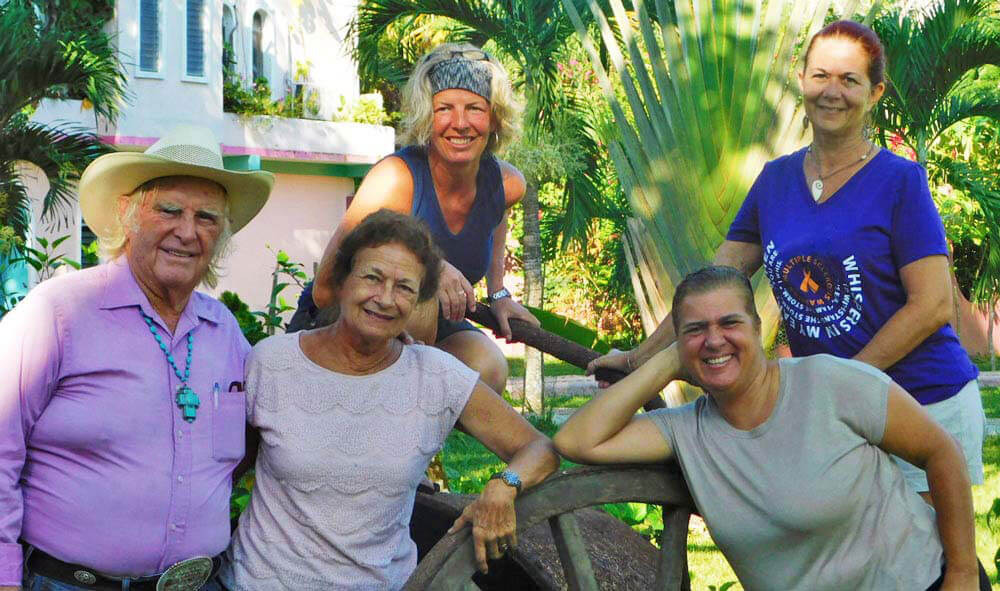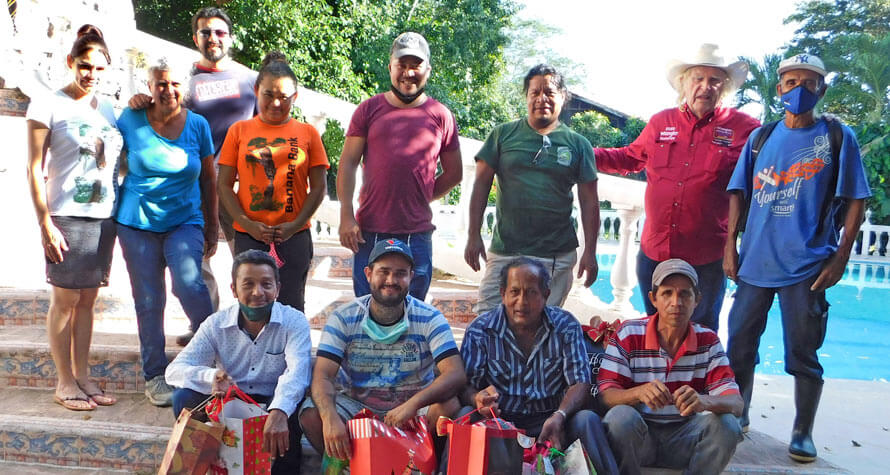










In 1973, John Carr and his business partner first set eyes on Banana Bank and were instantly captivated by its raw, natural beauty. Just two weeks later, they bought the property. What they found was far from idyllic—fences were down, the land was overgrown, and the country itself was still wrestling free from the grip of a fading colonial system. Yet something about Banana Bank spoke to them, especially to John.
Raised on a ranch in Montana, John was no stranger to hard work, but the tropics were entirely new. Even so, he saw promise in the land—and perhaps, a welcome escape from the brutal winters he’d known. With conviction, he packed up his wife and two daughters, loaded their belongings into a used GMC U-Haul box truck, and made the 1,400-mile journey from Leoti, Kansas, to Belmopan, Belize. That move marked the beginning of their new life at Banana Bank Ranch.
At that time, the ranch was purely a cattle operation, still echoing with the remnants of its frontier past. Decades earlier, Banana Bank had been a vital logging and trading outpost—the final stop on the Belize River before entering the untamed interior. It even boasted a horse racing track, where wealthy loggers once imported fine horses from Jamaica and beyond to compete. By the 1970s, those glory days were long gone. What remained was a herd of 1,500 cattle and a few strong horses, including a striking black stallion that came with the land—one of the few echoes of the ranch’s storied past.
Despite the challenges, John and his family poured themselves into the land. Over the years, Banana Bank transformed—growing from a struggling cattle ranch into something far greater. Today, the property is a vibrant blend of working farm, teak plantation, and hotel. It’s still home to a thriving herd of Simbrah cattle and about 80 horses that carry guests through jungle trails and across open pastures.
Now, John, Carolyn, and their daughters Leisa and Victrie continue to live and work at Banana Bank. Their story is woven into the land—one of resilience, adventure, and deep respect for Belize’s natural beauty. Visitors today don’t just stay at Banana Bank; they become part of its living history.

 In the 1800’s logging was the main thrust of the economy. The only way to the interior was by boat and people spoke of the jungle in hushed tones. Banana Bank was an outpost of this forbidden land on the Belize River. The colonial system was to award certain companies huge tracts of land with logging rights in exchange for support for the crown. Banana Bank was part of just such a property which by the 1940’s was known as the Belize Estates Corporation.
In the 1800’s logging was the main thrust of the economy. The only way to the interior was by boat and people spoke of the jungle in hushed tones. Banana Bank was an outpost of this forbidden land on the Belize River. The colonial system was to award certain companies huge tracts of land with logging rights in exchange for support for the crown. Banana Bank was part of just such a property which by the 1940’s was known as the Belize Estates Corporation.
From February to June, the logs were cut and dragged to the company headquarters along the Belize River. They were sorted, branded and lashed together in large rafts, awaiting the rains that flooded the river enabling them to float to the sea.
Such gathering sites for the logs were called barquadiers. As well as a barquadier, Banana Bank was a headquarters for the owners of the company, Belize Estates Corporation. It was a place to come and find a good meal, exchange news and get a good night’s rest. Stories were embellished by those coming from the city and others coming from deep within the jungle where the logs were found. It was a place of refuge from the hardships of the jungle and of excitement for those thirsty for a taste of adventure. A newspaper article from the Clarion in 1910 designated Banana Bank as a place of great hospitality and intrigue.
The logging operation depended on the transfer of logs first of all from the bush to the river, which was usually accomplished by oxen. These same oxen when old or wounded were used to feed the workers. If there was no river then in certain parts of the country, small rail lines were built. One such rail line was built in the early 1930’s going from Gallon Jug to Hill Bank, another outpost of the logging era. There was a short set of tracks on Banana Bank as well.
A train station was built at Gallon Jug around 1910 and used until the 40’s when heavy trucks replaced the small rail lines for transporting logs. Around 1945 the train station was broken down in panels and transported by truck to the New River, loaded onto a barge and carried down the river to the Caribbean Sea. The panels were loaded on a boat at Corozal and taken all the way to the mouth of the Belize River then up the river to Banana Bank. This is a distance of some 350 miles. It is only about 25 miles from Gallon Jug to Banana Bank as the crow flies. As improbable as it may seem, it actually happened.
By the mid-40’s the purpose of the ranch had shifted from logging to cattle and a large herd was maintained. There was also a remuda of some 50 horses. Largely due to the flamboyant nature of the managers of the day, Banana Bank was known countrywide as a place to come for a jolly good time and anyone involved with horses spent time there. The train station headquarters was the main house. Painted green, it stood in low profile against huge rain and ceiba trees. It wrapped itself around some stories that can’t really be told except in reverence because of their personal and delicate content. Other stories must be told. They are too good to keep.
A racetrack evolved and during the dry season, horses were brought across the river at a shallow point near Little Orange Walk. In the 50’s and 60’s horse races were held at Banana Bank on a regular basis and the ranch was famous countrywide for its horses and horsemen. A horse named Warrior Chief is still talked about today in racing circles. It might be mentioned here that the cattle foreman was a woman named Patricia, the pretty Scottish lass with flaming red hair, daughter of the manager, John Shaw. When the John Carr family arrived at Banana Bank in 1977 after having purchased the ranch in 1973 along with their business partner, Bill Jaeger, the logging days and days of rowdy fun were long gone. What was to lie ahead was the rebuilding of a broken down ranch, the victim of the transition of power from a tired English mother country to the poor struggling step child of the Crown. What a challenge it has been but one we have embraced and overcome.
 Banana Bank is all about family and our staff is our extended family – some are even second generation! When you communicate with our office you may be talking to Silvia or Anne.
Banana Bank is all about family and our staff is our extended family – some are even second generation! When you communicate with our office you may be talking to Silvia or Anne.
Our cowboys are eager to meet you and take you on memorable rides throughout the many trails at Banana Bank. Cesar, Sherman, John and Chico will show you the joy of riding through the jungle horseback. All our cowboys not only conduct the rides, but they train as per horse whispering methods and John Carr horsemanship practices, all our born and bred Banana Bank horses.
All our meals are prepared and served family style. Rosario is our head cook and is ready to prepare delicious local and American dishes. Please let us know if you have any special requests or dietary restrictions.




